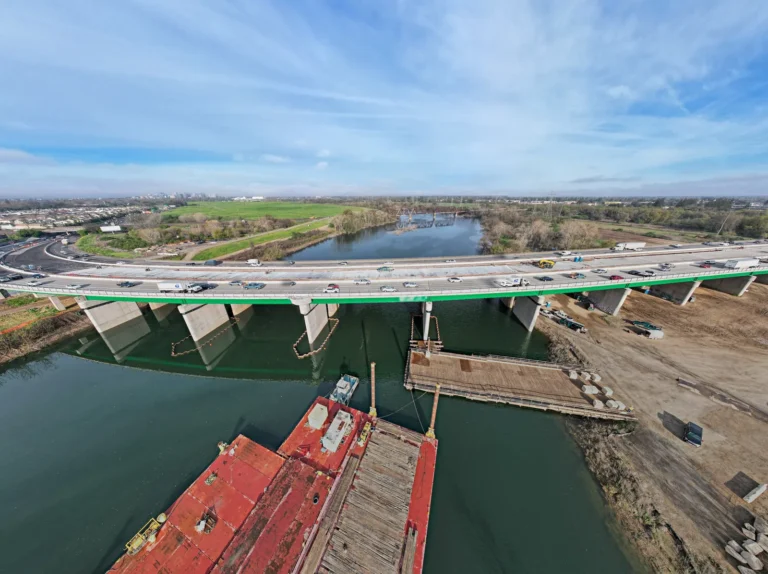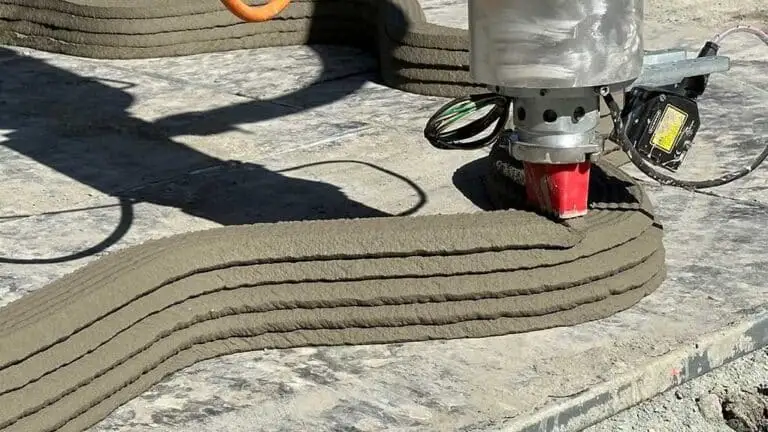In Bratislava, the vibrant capital of Slovakia, COLLARCH has recently brought to life a remarkable bus station that perfectly illustrates the immense possibilities of 3D-printed concrete technology in shaping modern public infrastructure. Working closely with Šebo-Lichý Architects and ICE Coral 3D Printing, this project forms a key part of the Harmincova Street expansion, serving the rapidly growing Čerešne neighborhood.
Design Context and Objectives
From the outset, the team aimed to create a bus shelter that not only fits seamlessly into the new urban fabric but also enhances the comfort and safety of its users. The station takes the form of an elliptical cylinder, thoughtfully oriented based on pedestrian movement patterns and sightlines. Interestingly, the designers tilted the structure slightly toward the west, which cleverly minimizes exposure to the harsh afternoon sun and the prevailing winds. Additionally, perforations on the southeast side improve visibility and transparency, inviting a sense of openness from various viewpoints.

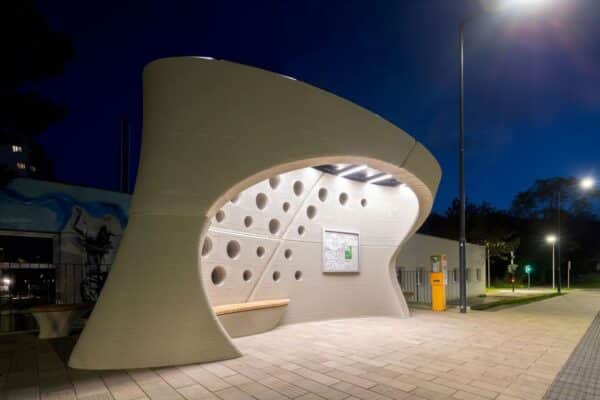
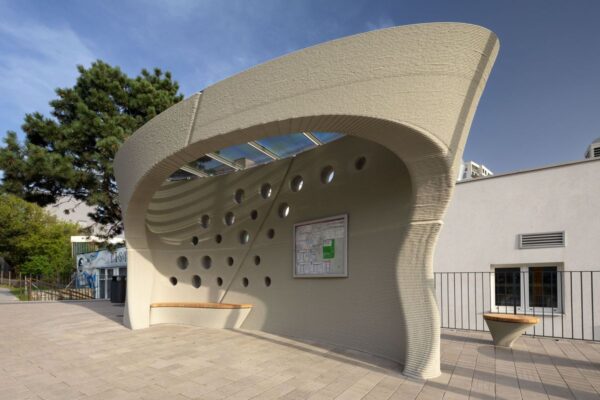
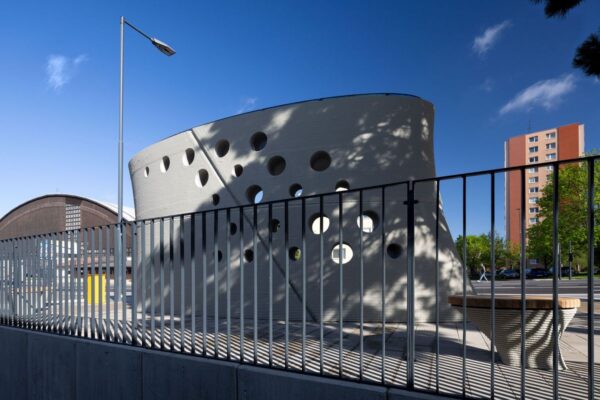
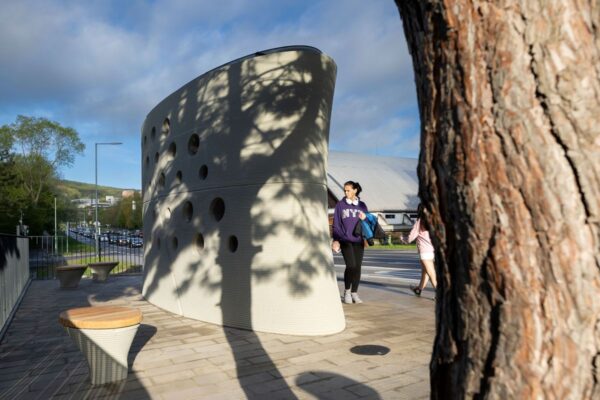
3D Concrete Printing Technology and Its Application
This project marks a significant leap in construction techniques, as the main structure was fabricated using large-scale 3D concrete printing. Unlike traditional methods, this technology allows builders to craft intricate shapes directly from digital models, completely eliminating the need for cumbersome molds. The resulting layered texture is reminiscent of natural geological formations, which not only adds aesthetic value but also helps reduce material waste and accelerate construction timelines.
By employing precise digital extrusion of concrete, the team achieved an extraordinary level of design freedom and material efficiency, enabling them to create custom urban elements tailored perfectly to their environment.
Comparing Traditional Construction with 3D Concrete Printing
| Feature | Traditional Construction | 3D Concrete Printing |
|---|---|---|
| Construction Time | Longer | 30–70% Faster |
| Mold Requirement | Essential | Not Required |
| Design Precision | Limited | Digitally Accurate |
| Material Usage | Higher | Up to 60% Less |
| Architectural Freedom | Limited | High — allows unique shapes |
| Environmental Impact | Higher waste and emissions | Lower waste and emissions |
| Overall Cost | Variable | Lower long-term |
Materials and Functional Finishes
The roof features a minimalist steel frame topped with reflective Stopsol glass, expertly designed to limit heat buildup while maintaining transparency. Inside, integrated lighting enhances safety, while 3D-printed benches covered with durable larch wood offer both comfort and resilience against weather conditions.
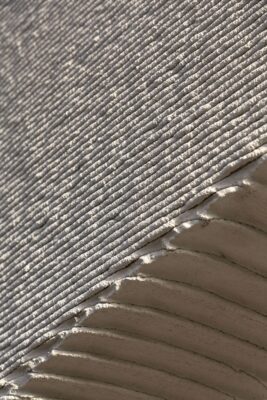
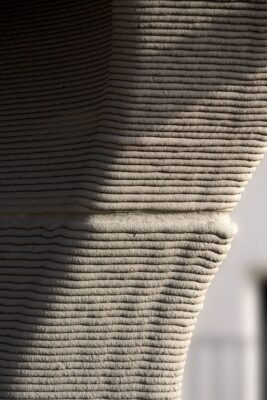
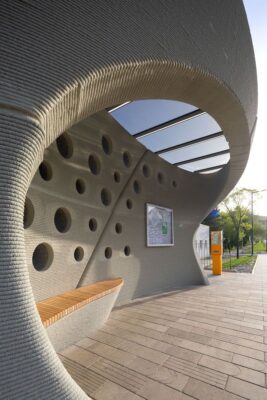
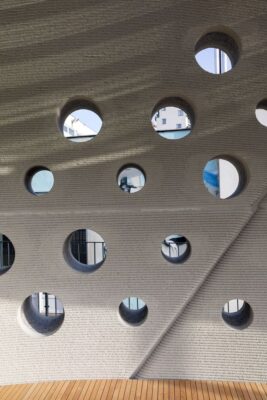
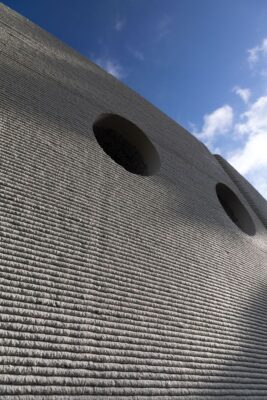
Components of the Bratislava Bus Station
| Component | Description |
|---|---|
| Main Structure | Elliptical concrete cylinder printed in 3D with layered texture |
| Roof | Lightweight steel frame with reflective Stopsol glass |
| Side Walls | Perforated design for airflow and visual openness |
| Benches | 3D-printed, covered in weather-resistant larch wood |
| Lighting | Integrated within the structure for enhanced safety |
| Orientation | Tilted westward for sun and wind protection; open southeast for transparency |
Importance Across Design Disciplines
Architects, urban planners, and designers alike can draw inspiration from this project. It highlights how robotic 3D concrete printing can produce bespoke, non-standard forms efficiently, contributing to the ongoing conversation about sustainable construction and circular economies. Furthermore, passive design strategies like shading and ventilation support energy efficiency, making this station a model for future urban infrastructure.
Practical Comparison with Other 3D Concrete Printing Projects
The Bratislava bus station stands alongside pioneering projects such as Spain’s 3D-printed pedestrian bridge and the innovative pavilion in the Netherlands. While each project leverages 3D concrete printing technology uniquely, Bratislava’s station distinguishes itself through its functional integration into public transportation networks and urban landscapes.
| Project | Location | Purpose | Scale | Unique Feature |
|---|---|---|---|---|
| Bratislava Bus Station | Slovakia | Public Transport Shelter | Small-Scale | Elliptical design with layered texture |
| 3D-Printed Pedestrian Bridge | Spain | Pedestrian Crossing | Medium-Scale | Structural complexity with spans |
| Concrete Pavilion | Netherlands | Exhibition Pavilion | Small-Scale | Lightweight, complex geometry |
Conclusion
Ultimately, the 3D-printed concrete bus station in Bratislava stands as a compelling example of how modern technology and creative architectural design come together to deliver sustainable, efficient, and aesthetically pleasing urban infrastructure. Far from a futuristic concept, 3D concrete printing proves to be a practical, powerful tool that cuts waste, speeds up building, and unlocks new design possibilities. More importantly, the project embodies a thoughtful approach to the circular economy, prioritizing both environmental stewardship and user experience. Through innovations like these, Bratislava is paving the way for smarter, more adaptable cities worldwide.
ArchUp is your platform to follow everything “architectural“: news, analyses, and designs straight from the heart of the modern architectural movement.




